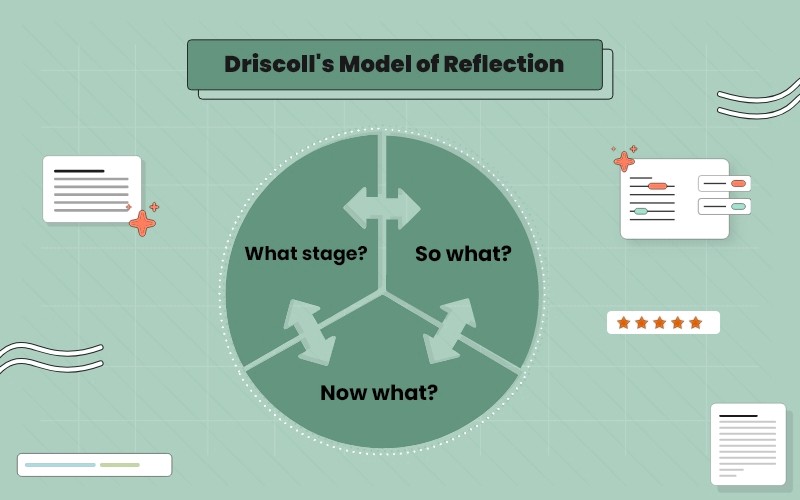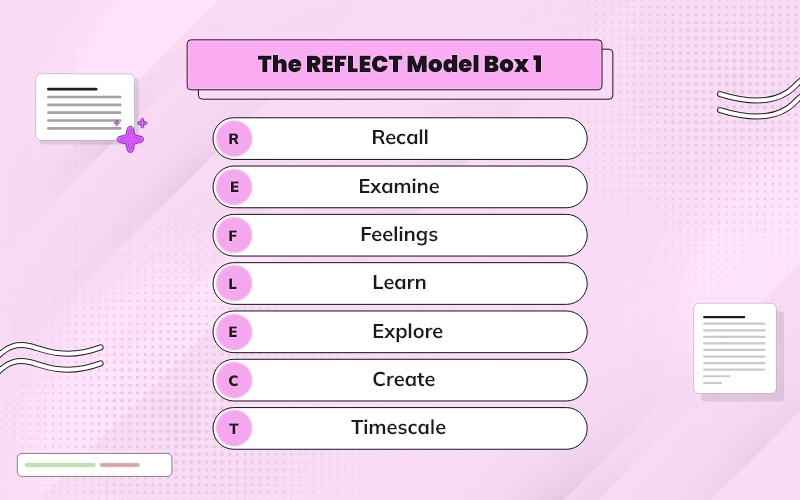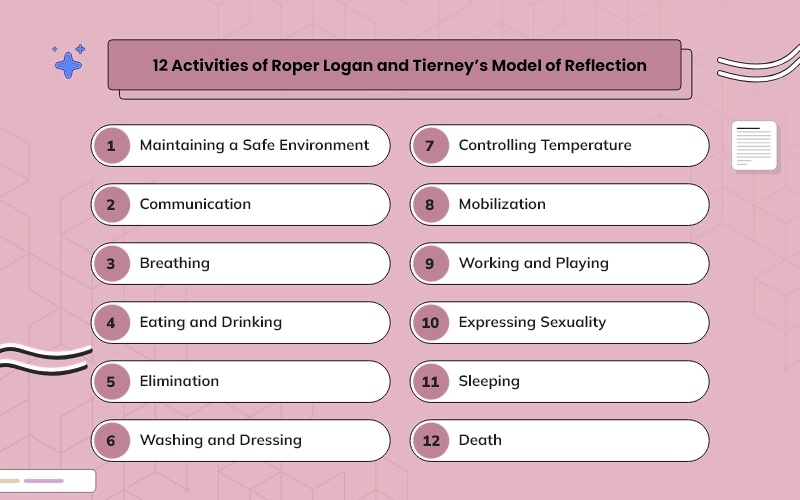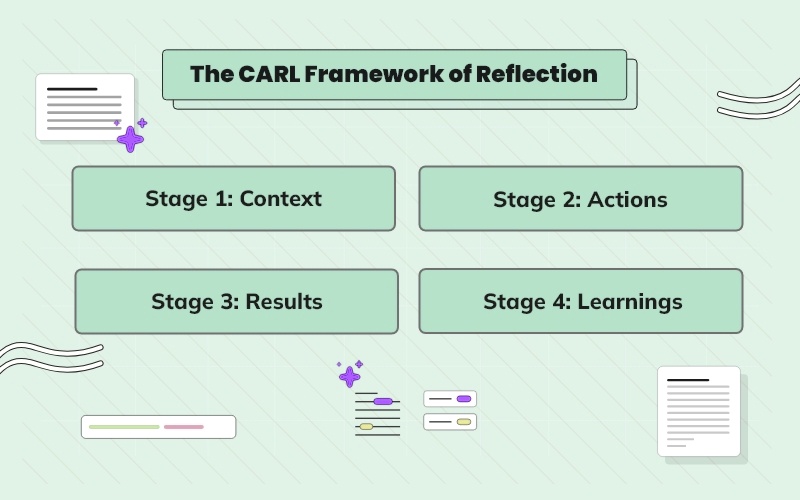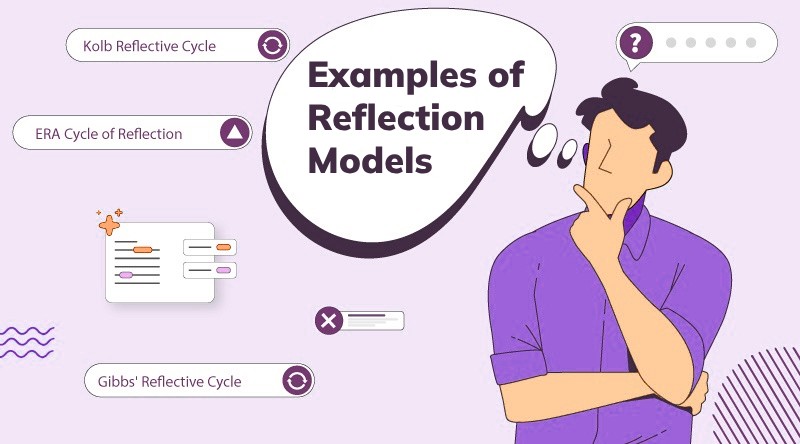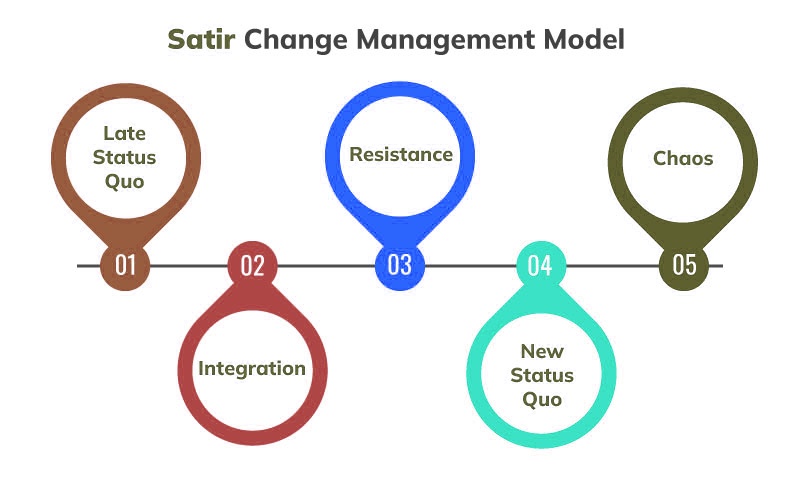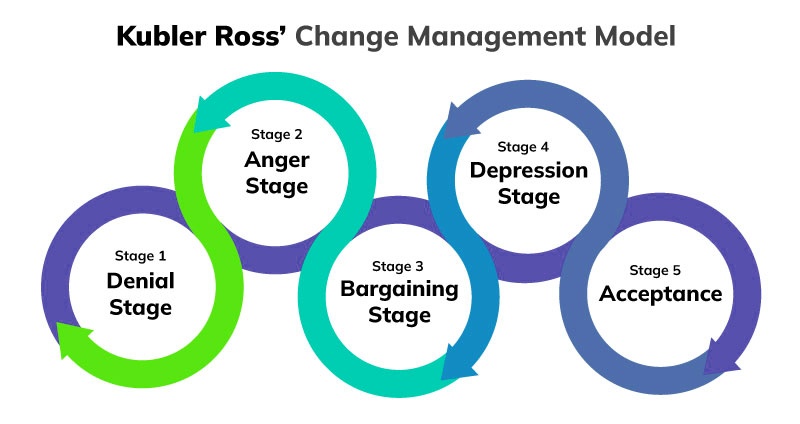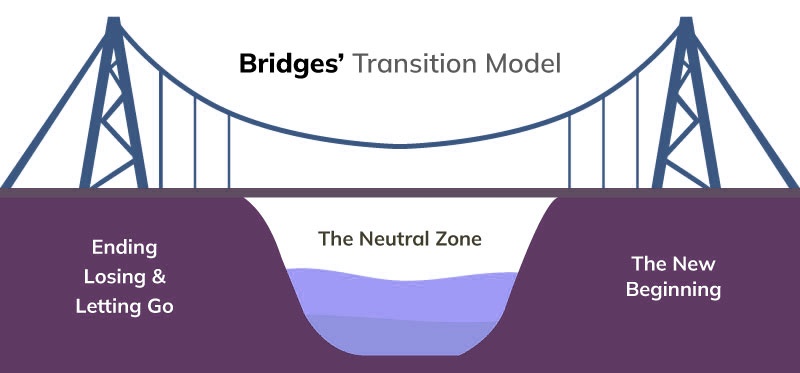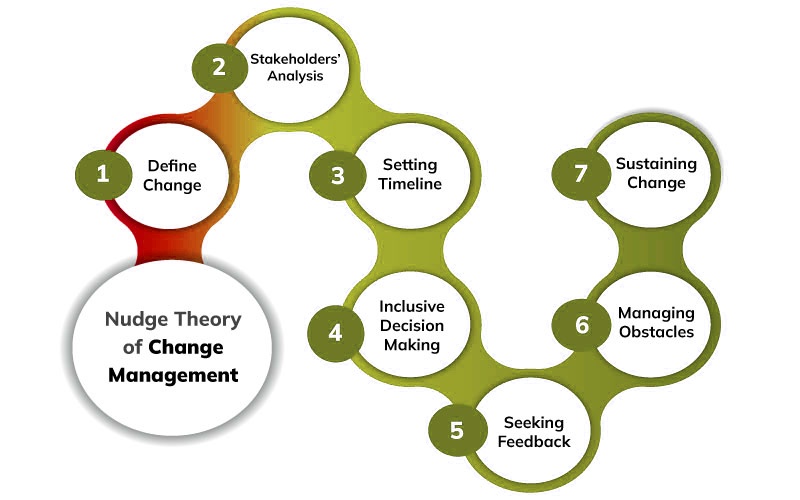Overview
Driscoll gave the model of reflection in 1994 as a framework to guide self-reflection among individuals regarding some event or happenings. The model was developed on a basis of the Borton model of reflection which focuses on three questions (Gladd, 2021). What? So what? and Now what? These three questions help to reflect on an event or situation but do you know that answering these questions can be ambiguous at times? Yes, this is a reason that Driscoll developed a new reflective model by matching it to the experiential learning cycle. Driscoll's model of reflection also provided additional guidance regarding what should be reported at each stage of reflection.
Table of Contents
Three stages of Driscoll’s model of reflection
Stage 1: What stage
The first stage in this reflection is “What stage?” which considers describing a whole situation by answering a few questions which are listed as follows-
- What happened?
In this stage, you will focus on the background information highlighting instances of the event you are reflecting upon. - What did you observe?
In this, you will focus on the additional information that you noticed throughout the occurrence of the event. - What were the actions taken?
In this, you will highlight the major actions taken by you and the other people involved in the situation. - How did you react?
While answering this question, you will focus on the reactions given by you throughout the event occurrence. - How did others react?
In this, you will highlight the various ways in which others involved in the situation reacted. - What were the most surprising elements in the occurrence of the event?
In this, you will highlight the aspects of the event that gave you a feeling of shock or surprise.
Stage 2: So what
The second stage of this reflection is “So what?” which aims to promote understanding of the event by triggering reflection on the feelings of individuals regarding the event. The few questions that are answered at this stage include-
- How did you feel during the occurrence?
In this, you will focus on underlining the feelings you had during the event you are reflecting upon. - How do you feel regarding the event at this moment?
While answering this question, you will highlight the feelings you are having about the event at this moment. - Do you feel different regarding the situation and why?
In this, you will highlight the difference in feelings during and after the occurrence of the event. - What were the positive aspects of this event?
In this, you will focus on all the positive things that happened during the event. - What were the negative aspects?
After highlighting the positive aspects, you will also focus on the negative aspects of the event. - What were others feeling?
While answering this question, you will highlight the feelings of other people involved in the situation. - Were your experiences different from others?
In this, you will highlight the fact whether your experience was different from others or not.
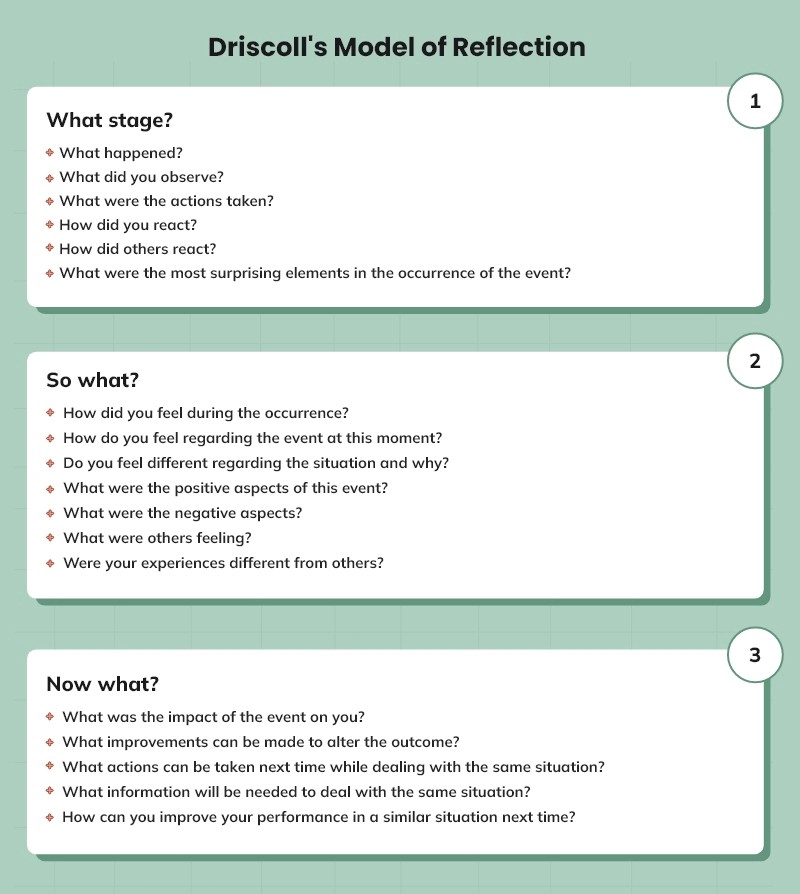
Stage 3: Now what
The third stage of this reflection is “Now what?” where an action plan for dealing with the same situations in the future is developed. This stage includes the impact of an event on individuals and self-awareness about how and why individuals acted in a certain way. The few questions which can be answered at this stage include-
- What was the impact of the event on you?
In this, before creating an action plan, you have to focus on the impact of the event on you. - What improvements can be made to alter the outcome?
While answering this, you will highlight the ways in which you can improve and make the outcome better for future situations. - What actions can be taken next time while dealing with the same situation?
In this, you will list out one or two actions that you will take if the future situations occur again. - What information will be needed to deal with the same situation?
In this, you will answer what information which can be theoretical or practical is needed in order to react or attain the SMART nursing goals for similar situations in the future. - How can you improve your performance in a similar situation next time?
Lastly, you will highlight the ways in which you will improve your performance for a similar situation in the future.
Since Driscoll's model of reflection helps to properly investigate the situation, this model is mainly used in a health care setting by nurses to provide a reflection on their experience or medical situation and to identify actions that can be taken for self-improvement and to improve the quality of care in the future.
References
Gladd, J. (2020) John Driscoll's "what?" Cycle of reflection, Write What Matters. MSL Academic Endeavors. Available at: https://idaho.pressbooks.pub/write/chapter/john-driscolls-what-cycle-of-reflection/ (Accessed: November 23, 2022).


